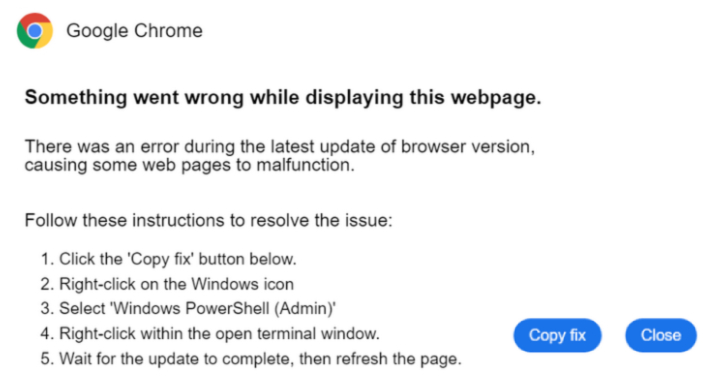
A How-To Guide for a Value-Enhancing Application Due Diligence
In today’s fast-paced business environment, where technology drives progress and innovation, mergers and acquisitions (M&A) have become common strategies for growth and expansion. When evaluating potential targets in the tech sector, conducting thorough due diligence on the applications or software platforms they offer is crucial. This process, known as application due diligence, is essential to ensure that the acquisition adds value to the acquiring company. In this guide, we will delve into the intricacies of Value-Enhancing Application Due Diligences.
The Importance of Application Due Diligence
Application due diligence involves the comprehensive assessment of software applications or platforms owned or developed by a target company. This process is a critical step in the M&A process for several reasons:
- Risk Mitigation: By thoroughly evaluating the target’s applications, the acquiring company can identify potential risks, such as security vulnerabilities, intellectual property issues, or compliance concerns. This proactive approach helps mitigate risks associated with the acquisition.
- Synergy Identification: Effective application due diligence helps in identifying synergies between the target’s applications and the acquiring company’s existing portfolio. These synergies can lead to cost savings, increased market share, and enhanced competitiveness.
- Value Maximization: A deep understanding of the target’s applications allows the acquiring company to assess their true value. This knowledge is vital in negotiations and helps ensure that the acquisition is financially sound and aligns with the acquiring company’s strategic objectives.
- Integration Planning: Application due diligence provides insights into the complexity of integrating the target’s applications into the acquiring company’s infrastructure. This information is crucial for post-acquisition integration planning.
Now, let’s explore the steps involved in conducting a value-enhancing application due diligence.
Step 1: Define Objectives and Scope
Before embarking on the due diligence journey, it’s essential to define clear objectives and scope. This step involves answering key questions such as:
What are the strategic goals of the acquisition?
Which specific applications or software platforms are under consideration?
What are the critical success factors for this transaction?
Clear objectives and scope will guide the due diligence process and ensure that the focus remains on areas that align with the acquiring company’s strategic priorities.
Step 2: Assemble a Multidisciplinary Team
Application due diligence is a complex endeavor that requires expertise from various domains. Assemble a multidisciplinary team comprising professionals from:
Technology: IT experts who can assess the target’s software architecture, code quality, and infrastructure.
Legal: Lawyers who can review contracts, licenses, intellectual property rights, and potential legal liabilities related to the applications.
Financial: Financial analysts who can assess the target’s financial statements, revenue streams, and cost structures related to the applications.
Operational: Operations specialists who can evaluate the target’s application management processes, scalability, and customer support.
A well-rounded team ensures that all aspects of the due diligence process are thoroughly examined.
Step 3: Information Gathering
This step involves collecting all available information about the target company’s applications. It includes:
Documentation: Review all available documents related to the applications, including user manuals, technical documentation, source code repositories, and development roadmaps.
Interviews: Conduct interviews with key personnel from the target company, including developers, product managers, and IT staff, to gain insights into the applications’ development and maintenance processes.
User Feedback: Collect feedback from current users of the applications, if possible, to understand their experiences, pain points, and expectations.
Market Research: Analyze the target company’s position in the market, including competitors, market trends, and potential growth opportunities for the applications.
Step 4: Technical Assessment
The technical assessment is a critical aspect of application due diligence. It involves a deep dive into the technology stack, infrastructure, and codebase of the target’s applications. Key areas to focus on include:
Architecture: Assess the software architecture for scalability, reliability, and performance. Identify any bottlenecks or architectural limitations.
Code Quality: Review the source code for readability, maintainability, and adherence to best practices. Identify any potential technical debt that may impact future development.
Security: Conduct a thorough security assessment to identify vulnerabilities and assess the target’s security practices and incident response capabilities.
Infrastructure: Evaluate the target’s hosting infrastructure, including servers, databases, and cloud services, to ensure they meet the acquiring company’s standards.
Step 5: Legal and Compliance Review
The legal and compliance review is crucial to identify any potential legal issues or risks associated with the applications. This includes:
Intellectual Property: Verify that the target company has the necessary rights and licenses for any third-party software or intellectual property used in the applications.
Contracts: Review all contracts related to the applications, including customer agreements, vendor agreements, and partnership agreements, to assess any potential liabilities or obligations.
Regulatory Compliance: Ensure that the applications comply with all relevant industry regulations and standards, such as data protection and privacy laws.
Litigation and Disputes: Investigate whether the target company is involved in any ongoing or potential legal disputes related to the applications.
Step 6: Financial Analysis
The financial analysis aims to understand the financial health of the applications and assess their revenue and cost structures. Key aspects to consider include:
Revenue Streams: Identify the sources of revenue generated by the applications, such as subscription fees, licensing, or advertising.
Cost Structure: Analyze the cost of maintaining and operating the applications, including development costs, hosting expenses, and support and maintenance costs.
Profitability: Assess the profitability of the applications by comparing revenue to expenses. Identify any areas where cost optimization is possible.
Financial Projections: Develop financial projections for the applications to assess their potential future value within the acquiring company.
Step 7: Integration Planning
Once the due diligence process is complete and the acquiring company decides to proceed with the acquisition, it’s essential to develop a detailed integration plan. This plan should outline how the target’s applications will be integrated into the acquiring company’s existing infrastructure and operations. Consider factors such as:
Technical Integration: Define the technical aspects of integrating the applications, including data migration, API integration, and software compatibility.
Operational Integration: Determine how the target’s application management processes will be integrated with the acquiring company’s processes.
Customer Transition: Plan for a seamless transition for existing customers of the applications, ensuring minimal disruption and maintaining a high level of service.
Employee Integration: Address the integration of the target company’s employees, including their roles, responsibilities, and reporting structures within the acquiring company.
Conclusion
Value-enhancing application due diligence is a critical step in the M&A process, especially in the technology sector. It helps acquiring companies assess the potential risks and rewards of an acquisition, identify synergies, and develop a clear integration plan. By following the steps outlined in this guide and assembling a multidisciplinary team, organizations can enhance their chances of a successful and value-driven acquisition.
Remember that the due diligence process is not a one-size-fits-all approach. It should be tailored to the specific objectives and scope of the acquisition. With careful planning and a thorough assessment of the target’s applications, companies can make informed decisions that lead to strategic growth and value creation.
Contact Cyber Defense Advisors to learn more about our Value-Enhancing Application Due Diligence solutions.





